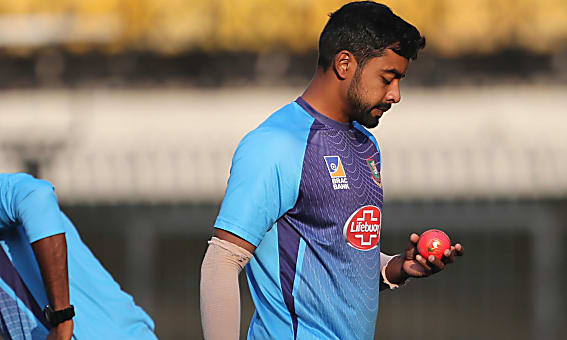
Much has been made about the historic Day/Night Test between India and Bangladesh at the Eden Gardens in Kolkata. The BCCI and CAB have held nothing back, making grand plans for the occasion. One of the plans include paratroopers coming down to the field and handing a pink ball to Virat Kohli and Mominul Haque.
This gesture speaks to the importance of the pink ball. But what exactly goes into the making of this ball that meets in the middle of the red ball of test cricket and the white ball of short-form cricket?
The ball is coloured pink to help visibility under the flood lights of night cricket. This addition of colour tends to make the ball aid conventional swing over reverse swing. Hence, the BCCI have ensured that the ball has been stitched in a way that reverse swing is aided.
The pink ball aids conventional swing more because of the extra lacquer used to make sure that the ball is easy to spot even under lights. The spotting has been a major area of concern with the pink ball, especially in the twilight phase.
The pink ball takes around 7-8 days to make and it starts with the preparation of the pink-dyed leather. Once the leather is ready, they are cut into pieces which shall later become the covering of the ball. The leather is most importantly softened overnight to ensure that it is not too hard and can be easily wrapped around the cork later.
After this, the cups are stitched from the leather cuttings and are once again coloured. Once the leathers are ready, the cork is inserted and that is followed by stitching them up. The inner stitching takes place first and the ball is then stitched from the outside.
Once the main formation is complete, the final layer of colouring and shining is done before the ball is finally weighed and dispatched. The pink ball is heavier than the conventional red ball.
Apart from the weight, are there any other differences between the conventional red ball used in Test cricket and the pink ball?
There are quite a few. From differences in leather to the colour of the thread, the two balls aren’t as alike as one would assume.
The seam of the pink ball is more noticeable compared to the red, as it is a mixture of synthetic along with linen, compared to the red ball which is entirely synthetic. Pink balls are such so that bowlers can maintain the grip even after dew sets in.
Red balls see wax applied to them to give its cherry red colour. This wax also allows bowlers to reverse swing the ball by rubbing and maintaining one side over the other. Pink balls are waxless, as the wax could cause the ball to turn black over the course of a match.
Instead of wax, a glossy coating is used on the pink ball which prevents scratches on the ball and helps maintain its colour. This ‘ball polish’ is what people are referring to as lacquer.